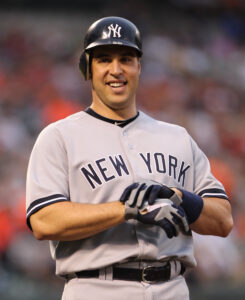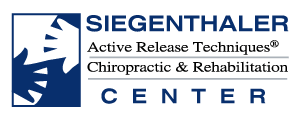
Mark Teixeira’s Therapy Regimen
Posted by drjims on Jul 17, 2013 on Mark Teixeira’s Therapy Regimen
Mark Teixeira’s Therapy Regimen
Editor’s Note: Teixeira injured his wrist in preparation for the World Baseball Classic on Tuesday, March 5, 2013.
When Mark Teixeira strains a calf muscle, Yankee fans everywhere limp. This past August, the Yankees were trying to hold on to their division lead when the Gold Glove first baseman and dependable power hitter felt a stab of pain in his left calf, sprinting toward first. After 10 games, he was rushed back into the lineup and immediately strained it again, necessitating a three-week layoff and a lot of grousing that the team was old and injury-prone.
Teixeira is all of 32, but in baseball years, he’s deep into middle age (he even admitted that he’s “maybe slowing down a tick”). Still, he says he’d like to play eight more seasons. That’s roughly 1,300 more games. In the pursuit of that goal, he has embarked on a rational but obsessive pursuit of the best body therapies his, or the Yankees’, considerable money can buy. “Some people would call it anal,” he says, “but I like things done a certain way.” Stradivarius violin or Ferrari sports car, choose your metaphor, his body is exquisite machinery that requires constant attention. “You need to continue to tune it to make sure it’s perfect for every show or game or however you want to put it,” he says.
In season, the Yankees provide Teixeira and his 24 active-roster teammates with the services of two athletic trainers, a massage therapist, and a strength-and-conditioning coach, who are all full-time staff, and the part-time ministrations of an orthopedist and two chiropractors. He has commandeered the services of one of those chiropractors, Gil Chimes, his neighbor in Greenwich, Connecticut, for a weekly two-hour session at Chimes’ headquarters at Greenwich Sports Medicine. Besides doing chiropractic manipulations, Chimes is also one of the country’s most sophisticated practitioners of a range of muscle therapies, first among them “medical acupuncture” and a targeted deep-muscle massage called ART (Active Release Techniques).
Teixeira is a bull of a guy: 6-foot-3, 220 pounds. With his short-cropped hair and Pepsodent smile, he looks like he was “born to grace a baseball card,” as one sportswriter put it. But the scene that greets us this winter morning in Greenwich has never been captured by Topps – the first baseman stripped down to his athletic shorts and stretched out on his stomach as Chimes inserted acupuncture needles into the back of his lower leg and ankle. Once they’re in, Chimes grabs what looks like a small TV remote with a two-inch metal prong. He briefly touches the prong to each needle, sending a precisely calibrated jolt a few inches into the Yankee’s flesh. Much has been invested in having this particular muscle – the soleus, deep inside the calf – not tear under the strain of running the bases. “I had a huge stolen base in the play-offs,” Teixeira says, “but in the back of my mind, I’m thinking, ‘I hope I don’t blow out.’ But my game isn’t based on speed….” He pauses the baseball meditation to let out an out-of-left-field shout: “Whoa! Whoa! Way too much!”
“I just wanted to make sure he was paying attention,” Chimes jokes, a little nervously. “He’s only hit me once.”
With a little trial and error, Chimes is constructing a dynamic portrait of how the nerves, muscles, and joints of Mark Teixeira mesh in movement, then figuring out how the system can be brought back into sync when something goes awry. The first pass is with the acupuncture needles. The theory, backed up by lab research, runs like this: Muscles in a chronically imbalanced state send distress messages via the motor nerves to the spinal cord and up to the brain, which sends “bad” commands back down the line and keeps muscles locked in dysfunction. With that needle-delivered shot of electricity, Chimes overrides the distress signals and resets the system so that muscle and brain can return to their usual, healthy conversation. “It’s like deliberately overloading an electrical circuit in your home,” he says. “The lights go out, you reset the circuit-breaker box, and everything goes back to normal.”It’s the nature of the business that the bodies of elite athletes accumulate injury, forcing some muscles to shut down while others overwork to pick up the slack. Athletes are so strong and so good at this compensation that this progressive loss of muscular efficiency is often invisible until, like Teixeira’s calf muscle, something finally blows. (He blames a broken right ankle, sustained in college, for setting in motion a chronic overloading of the muscles and joints on his left side.) We watch as Chimes “cleans up” a handful of muscle-nerve regions, the goal being for muscle to grow more supple so it can absorb and disperse force, more like a trampoline, he says, less like a wall.
Chimes’ second pass through Teixeira’s body is with his hands, so-called manual therapy. Drawing from everything, but especially ART, Chimes finds areas of muscle tightness by feel and “releases” the tension by pressing down at precise spots with his thumbs. (In textbook ART, the patient moves his limbs in certain prescribed ways – that’s the “active” part – to put the muscles under tension so the therapist can get a stronger release. Chimes believes he’s refined his technique to the point where he’s more effective doing everything himself.) When contracted muscles release their grip, they let go of entrapped nerves and move more smoothly against neighboring muscles and against the tough connective tissue, the fascia, that holds the whole system of soft tissue in place. “Not to blow smoke up Gil’s ass,” Teixeira says, “but his knowledge of the anatomy is so exact, he’s more of a carver, whereas some ART guys are choppers. You know, you just hope it works.”
Traditional Eastern explanations for why these kinds of techniques work have to do with life energy, the chi, which runs along bands or meridians up and down the body. For Chimes, these are only clues as to what’s really going on at the neuro-anatomical level.
Teixeira isn’t so sure. Able to ponder the big questions while lying on a treatment table with needles sticking out of him, he asks, “Who’s right, East or West? Is it chi or Western science? They’re both right. What I know is that when you don’t stay healthy, you try to figure out a way to fix it. If I have a headache or I’m sick or tired, I’ll close my eyes for half an hour and concentrate on my breathing. That’s an Eastern technique, meditation, and no orthopedist is going to tell you to do that.” And then there’s yoga, to keep the mind calm and the body limber. Teixeira’s wife has a fairly regular practice, and he says he’s “dabbled,” attending classes until he realized that “they’re not necessarily the best thing for me now.” Chimes chimes in: “He’s a distraction for the class.” The image is striking: a studio of fit housewives regarding this specimen of masculine chi. “I was,” he admits.
Teixeira grew up in suburban Baltimore, in an Italian-Portuguese family, traditional to the core. “There was no long hair, no tattoos, zero tolerance for drugs and alcohol,” he says, “and I try to pass those values on to my own kids.”
On the face of it, he might seem like a contradiction in terms, a red-state-values guy who finds himself at the leading edge of East-meets-West blue-state therapies.
Consider his off-season workout regimen, a mix of old school (hours of honing his swing at a nearby batting cage and lifting weights at home) and new (stability and flexibility exercises with a trainer versed in something called the Egoscue Method, devoted to finding one’s perfect alignment). His diet departs radically from steak-and-potato jock orthodoxy. He and his family eat mostly gluten-free, heavy on the fish, vegetables, beans, and fruits, maybe one serving of chicken a week. His main extracurricular business interest is his part-ownership of a New York-based chain of high-end “raw” juice and smoothie retail stores, Juice Press. “I first saw Mark driving up to our store on East First Street,” says Marcus Antebi, Juice Press’s shaved-headed founder, recalling the meeting that led to the partnership. “The door of this black SUV opens, and out comes this guy with a goofy plaid shirt tucked into his jeans. Not really characteristic of the Village.” Two of Teixeira’s favorite Juice Press products are Dr. Green Juice (red apple, pineapple, kale, lemon, and ginger) and Love at First Sight (green apple, kale, and spinach), which, whenever practical, he has the company ship to him during the season.
We ask Teixeira if his “alternative” regimen has raised any eyebrows among teammates. “Not really,” he says. Whatever works, works, he figures, but he’s thought about it deeply enough to find a philosophical unity underneath the apparent clash of lifestyles. “The funny thing is,” he says, “what I’m doing is way more in line with my conservative Christian values, letting my body heal with these natural tools, than having surgery or taking drugs. When you think about all the anti-inflammatory drugs that are pumped into athletes’ bodies, it’s really sad.” About the illegal drugs, the steroids, that were a routine part of pro baseball – call it non-holistic juicing – he is unequivocal: “I came up in 2003, and I worked my tail off, and I could hit 35 homers a year, and people were like, ‘Eh, you’re doing all right.’ Because guys were hitting 50, 60, 70 homers. Absolutely crazy! And we knew exactly what these guys were doing. Now that we’ve mostly cleaned up the sport, 35 homers is a big deal again, and I’m happy.”
For those of us who will never hit a single home run, whose bodies are not corporate investments, the therapeutic relationship that Teixeira has forged with Chimes offers a window into what is possible when every biomechanical imbalance can be addressed with advanced techniques before blossoming into a hobbling injury. “If I had my way,” Teixeira says, “Gil would be with me every single day of the year. He didn’t travel with the team last year, but if he had, I wouldn’t have had that calf injury, or at least it wouldn’t have been as bad.”
But Chimes isn’t done with Teixeira yet. The final method is called the Graston Technique, breaking up scar tissue around tough muscle tendons by rubbing against them with small metal bars. We suggest to Chimes that he looks like an 1890s barber, giving the client a close shave with a straight-edge razor. “He does that too, actually,” Teixeira jokes. “That’s in the other room.”

